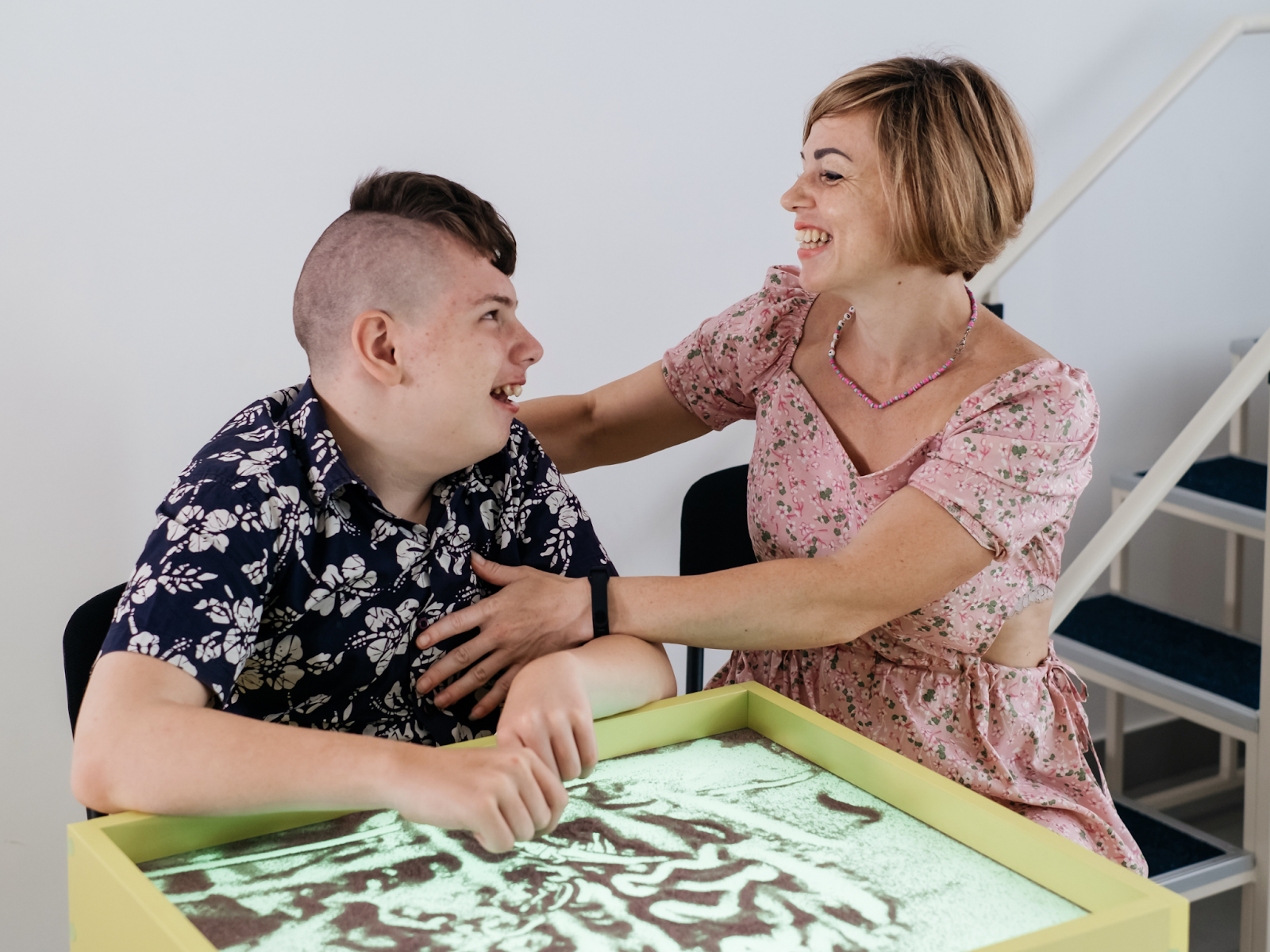If you’ve spent time in autism-related spaces online, you may have seen people refer to “T-Rex hands” or “dinosaur hands.” The term playfully describes the way some autistic individuals hold their arms or hands—elbows bent, wrists angled inward, and fingers slightly curled—resembling the short forearms of a T-Rex.
While it’s often used humorously, “T-Rex hands” in autism can reflect deeper aspects of how autism influences motor skills, sensory processing, and body awareness. Understanding what this posture means — and why it happens — can help caregivers, educators, and autistic individuals themselves support healthy, comfortable movement.
Autism and Hand Posturing: How They Connect
Autistic people often exhibit unique patterns of movement and posture. In fact, researchers as far back as the 1990s observed that autistic children tend to hold and maintain postures differently than neurotypical peers, such as putting more weight on one leg or maintaining unusual hand positions.
These differences can stem from several overlapping factors:
- Sensory processing differences: Variations in proprioception (body awareness) can make certain hand positions feel more natural or comfortable.
- Motor coordination and dyspraxia: Challenges with fine-motor control may influence how hands are held or moved.
- Hypermobility: Looser joints, common among autistic individuals, can lead to relaxed or inward-bent wrist and finger positions.
What Do “T-Rex Hands” in Autism Mean?
The short answer: they can mean different things for different people. Here are some of the most common reasons behind “T-Rex hands” or “raptor hands” in autism.
1. Stimming
For many autistic people, repetitive movements (or stimming) are a way to self-regulate and process sensory input. Hand flapping, finger flicking, or keeping the hands close to the chest can feel calming or grounding. “T-Rex hands” may appear during times of excitement, stress, or focus, serving a functional and healthy purpose.
2. Hypermobility and Motor Challenges
Some individuals with joint hypermobility or low muscle tone find it easier to hold their hands in a slightly curled position. This posture can reduce strain or simply feel more natural, particularly if certain muscles fatigue easily.
3. Natural Posturing and Sensory Feedback
Even outside of stimming or hypermobility, “dinosaur hands” can be an individual’s default resting position—just one of many normal variations in how people carry their bodies.
Tips for Healthy Hand Posturing
The goal isn’t to “fix” T-Rex hands in autism. There’s nothing inherently wrong with the posture itself. But if holding your hands a certain way leads to stiffness, numbness, or pain, a few small adjustments may help maintain comfort and mobility.
Stretch and Strengthen
Gentle hand and wrist stretches can relieve tension from repetitive posturing. Try:
- Wrist circles or gentle wrist flexion stretches
- Finger extensions (spreading your fingers wide, then relaxing)
- Squeezing a soft stress ball to build hand strength
Adjust Sleeping Positions
Some people notice “T-Rex hands” more when sleeping. If you wake up with sore wrists or tingling fingers, try:
- Sleeping with your arms extended or supported by a pillow
- Wearing a soft wrist brace to encourage neutral alignment
- Doing gentle morning stretches before getting up
Occupational Therapy Support
An occupational therapist (OT) familiar with autism and sensory differences can suggest personalized activities, adaptive tools, or joint-protection techniques to keep your hands healthy without forcing unnatural postures.
Understanding, Not Correcting
It’s worth remembering that autism-related posturing is part of natural neurodiversity. For some, “T-Rex hands” are a stim; for others, they’re simply how the body feels most comfortable. As long as the posture isn’t causing discomfort or limiting movement, it doesn’t need to be “treated.”
By learning about the sensory and motor reasons behind autism hand posturing, families and support networks can respond with empathy—focusing on understanding rather than correction.
Learn More About Life with Autism
If you or a loved one is exploring ways to better understand autistic movement, communication, or daily living supports, NeuroNav can help. Our independent facilitators guide families through the Self-Determination Program so that every plan reflects your goals, needs, and sensory profile.
Schedule a consultation today to learn how NeuroNav can help you design a plan that supports your well-being, comfort, and independence.


-1.png)

